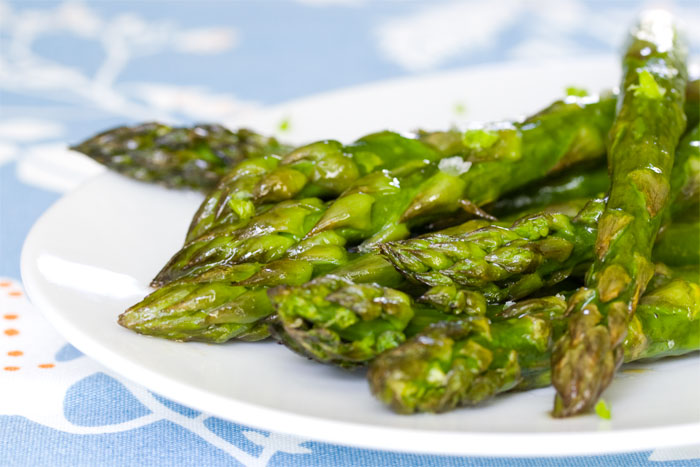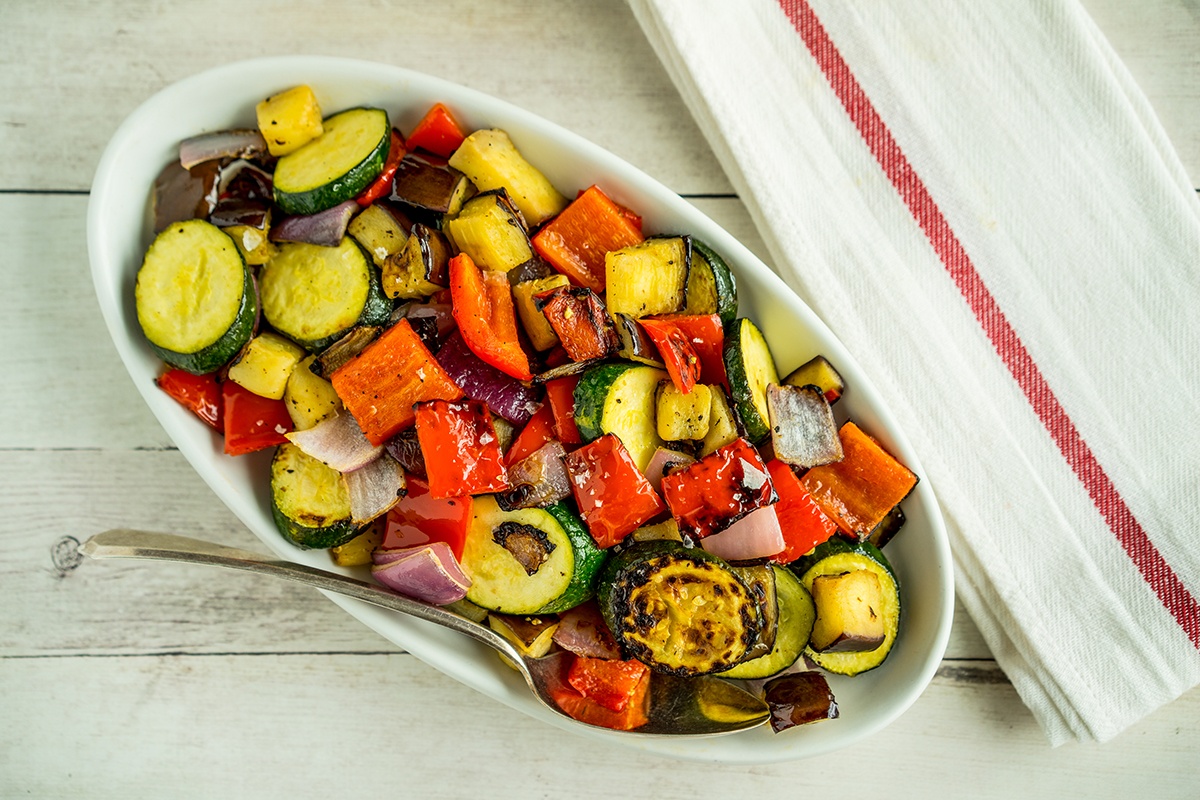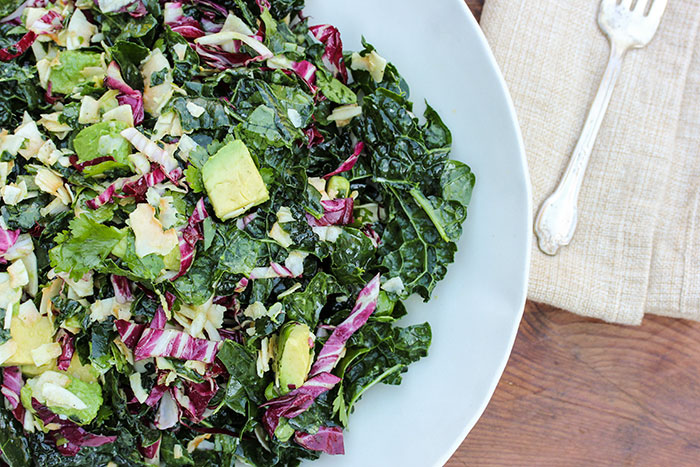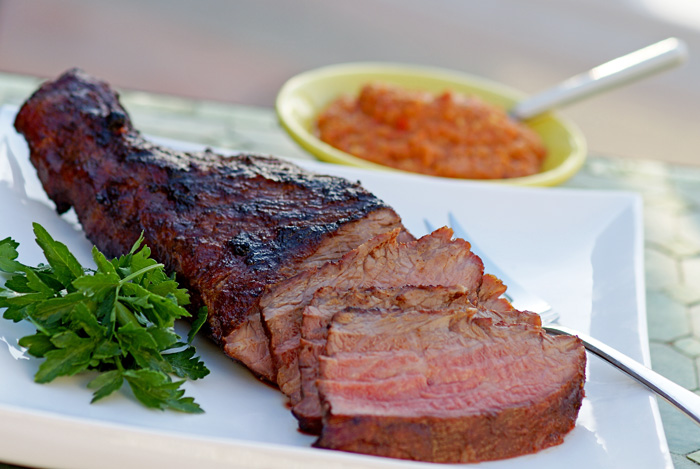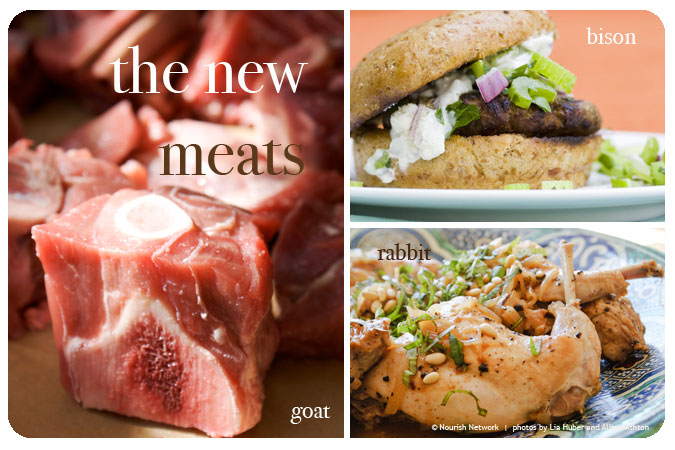It’s tough to pinpoint exactly when I started reducing my red meat consumption, but I know it happened sometime between the 1970s and yesterday. A lifelong meat eater, I simply realized that I’d been choosing red meat almost as a default, but when I stopped to think about it, my enthusiasm for cooking, eating and serving vegetables, fruits, whole grains, leaner meats and fish outpaced my desire for red meat.
 I still eat red meat, for sure, but far less of it, and I purchase it much more thoughtfully. This has led me to grass-fed bison, a red meat source touted for its nutritional, environmental and historical distinctiveness.
Research into bison invariably leads to some confusion over naming conventions: Some ranchers refer to their animals as bison and their meat as buffalo. Others do the reverse. “The terminology on the Native American reservations next to us is ‘bison’ on the hoof, ‘buffalo’ on the plate,” says Jill Maguire of Wild Idea Buffalo Co. in South Dakota. Many retailers and consumers use the two terms interchangeably.
Exploitation and conservation
Up to 60 million bison once thrived in the Great Plains. By the late 19th century, however, Europeans and Americans had so exploited the species that their numbers dropped precipitously, and by the 1890s, there were only hundreds left. Conservationist and governmental efforts to save the animals then kicked in, and by the early 20th century, the numbers began to recover, albeit slowly.
Environmental advantage
With a species’ very survival in question, an argument to save the animals by raising them for food may seem counterintuitive. But Maguire offers a convincing explanation for how grass-fed cultivation can help: “Our lands are constantly under threat from the plow to plant corn and soybeans as food for cows, and for buffalo. But they’re not supposed to eat corn; they’re supposed to eat grass, and when you start eliminating their habitat, they become crowded out.”
I still eat red meat, for sure, but far less of it, and I purchase it much more thoughtfully. This has led me to grass-fed bison, a red meat source touted for its nutritional, environmental and historical distinctiveness.
Research into bison invariably leads to some confusion over naming conventions: Some ranchers refer to their animals as bison and their meat as buffalo. Others do the reverse. “The terminology on the Native American reservations next to us is ‘bison’ on the hoof, ‘buffalo’ on the plate,” says Jill Maguire of Wild Idea Buffalo Co. in South Dakota. Many retailers and consumers use the two terms interchangeably.
Exploitation and conservation
Up to 60 million bison once thrived in the Great Plains. By the late 19th century, however, Europeans and Americans had so exploited the species that their numbers dropped precipitously, and by the 1890s, there were only hundreds left. Conservationist and governmental efforts to save the animals then kicked in, and by the early 20th century, the numbers began to recover, albeit slowly.
Environmental advantage
With a species’ very survival in question, an argument to save the animals by raising them for food may seem counterintuitive. But Maguire offers a convincing explanation for how grass-fed cultivation can help: “Our lands are constantly under threat from the plow to plant corn and soybeans as food for cows, and for buffalo. But they’re not supposed to eat corn; they’re supposed to eat grass, and when you start eliminating their habitat, they become crowded out.”
 Cheryl Sternman Rule is a food and nutrition writer whose work has appeared in numerous national magazines, including EatingWell and Body+Soul. She is the voice behind the food blog 5 Second Rule.
Cheryl Sternman Rule is a food and nutrition writer whose work has appeared in numerous national magazines, including EatingWell and Body+Soul. She is the voice behind the food blog 5 Second Rule.
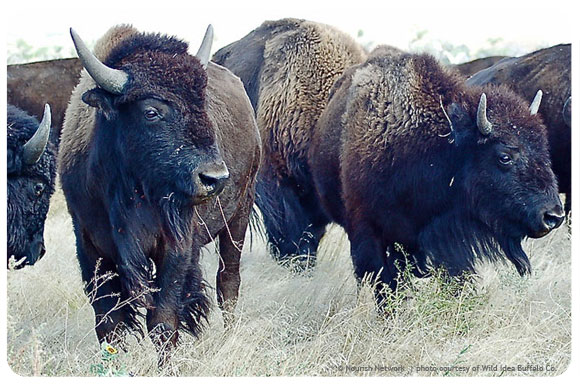 I still eat red meat, for sure, but far less of it, and I purchase it much more thoughtfully. This has led me to grass-fed bison, a red meat source touted for its nutritional, environmental and historical distinctiveness.
Research into bison invariably leads to some confusion over naming conventions: Some ranchers refer to their animals as bison and their meat as buffalo. Others do the reverse. “The terminology on the Native American reservations next to us is ‘bison’ on the hoof, ‘buffalo’ on the plate,” says Jill Maguire of Wild Idea Buffalo Co. in South Dakota. Many retailers and consumers use the two terms interchangeably.
Exploitation and conservation
Up to 60 million bison once thrived in the Great Plains. By the late 19th century, however, Europeans and Americans had so exploited the species that their numbers dropped precipitously, and by the 1890s, there were only hundreds left. Conservationist and governmental efforts to save the animals then kicked in, and by the early 20th century, the numbers began to recover, albeit slowly.
Environmental advantage
With a species’ very survival in question, an argument to save the animals by raising them for food may seem counterintuitive. But Maguire offers a convincing explanation for how grass-fed cultivation can help: “Our lands are constantly under threat from the plow to plant corn and soybeans as food for cows, and for buffalo. But they’re not supposed to eat corn; they’re supposed to eat grass, and when you start eliminating their habitat, they become crowded out.”
I still eat red meat, for sure, but far less of it, and I purchase it much more thoughtfully. This has led me to grass-fed bison, a red meat source touted for its nutritional, environmental and historical distinctiveness.
Research into bison invariably leads to some confusion over naming conventions: Some ranchers refer to their animals as bison and their meat as buffalo. Others do the reverse. “The terminology on the Native American reservations next to us is ‘bison’ on the hoof, ‘buffalo’ on the plate,” says Jill Maguire of Wild Idea Buffalo Co. in South Dakota. Many retailers and consumers use the two terms interchangeably.
Exploitation and conservation
Up to 60 million bison once thrived in the Great Plains. By the late 19th century, however, Europeans and Americans had so exploited the species that their numbers dropped precipitously, and by the 1890s, there were only hundreds left. Conservationist and governmental efforts to save the animals then kicked in, and by the early 20th century, the numbers began to recover, albeit slowly.
Environmental advantage
With a species’ very survival in question, an argument to save the animals by raising them for food may seem counterintuitive. But Maguire offers a convincing explanation for how grass-fed cultivation can help: “Our lands are constantly under threat from the plow to plant corn and soybeans as food for cows, and for buffalo. But they’re not supposed to eat corn; they’re supposed to eat grass, and when you start eliminating their habitat, they become crowded out.”
If not for the grass-fed bison industry, the theory goes, more of the heartland would be turned over to subsidized crop production – crops that, in turn, would be used to support industrial feedlots.If not for the grass-fed bison industry, the theory goes, more of the heartland would be turned over to subsidized crop production – crops that, in turn, would be used to support industrial feedlots. (The vast majority of the nation’s cattle and buffalo are raised in the feedlot model, Maguire says.) When ranchers instead use this land to graze wild buffalo, they produce a meat source that’s more sustainable and environmentally sound than the industrially produced alternatives. (Wild Idea also slaughters its buffalo in the field and has earned an American Humane Association certification. Because the animals suffer less trauma and release fewer stress hormones when field harvested, the theory goes, their meat tastes sweeter.) Nutritional benefits Nutritionally speaking, grass-fed bison has a bit of edge over beef. Grass-fed ground bison has roughly 25 percent fewer calories and half the saturated fat of grass-fed ground beef. Grass-fed meats, whether beef or buffalo, are also good sources of heart-healthy omega-3 fatty acids, thanks to the natural composition of the wild grasses on which they graze. Keep in mind that, like beef, bison can be either grass-fed, grass-fed and grain-finished, or grain-fed. Depending where you shop, you’re more likely to come across industrially raised, grain-fed buffalo. If you want the health and environmental benefits of grass-fed bison, be sure to verify how the meat was raised before you pull out your wallet. In general, you’ll probably pay about the same, or slightly more, for bison than for beef, though it’s not always a straight comparison. Some markets, like Whole Foods in Northern California, sell grass-fed beef, while their buffalo is grass-fed but grain-finished. Prices are roughly comparable, though many more beef cuts are available. Smart Cooking Tips Chef Forrest Waldo of Colorado-based High Plains Bison offers the following tips on bison cookery:
- Due to its leanness and relative lack of intramuscular fat, bison steaks and roasts require “one-third less heat and one-third less cook-time” than beef. In braises and stews, cook time may be more comparable.
- For best results, serve bison medium or medium-rare, rather than well done.
- As with other large cuts of meat, always let bison rest before slicing. This will ensure that the juices properly redistribute throughout the meat so it’s moist, tender and delicious.
 Cheryl Sternman Rule is a food and nutrition writer whose work has appeared in numerous national magazines, including EatingWell and Body+Soul. She is the voice behind the food blog 5 Second Rule.
Cheryl Sternman Rule is a food and nutrition writer whose work has appeared in numerous national magazines, including EatingWell and Body+Soul. She is the voice behind the food blog 5 Second Rule. 




